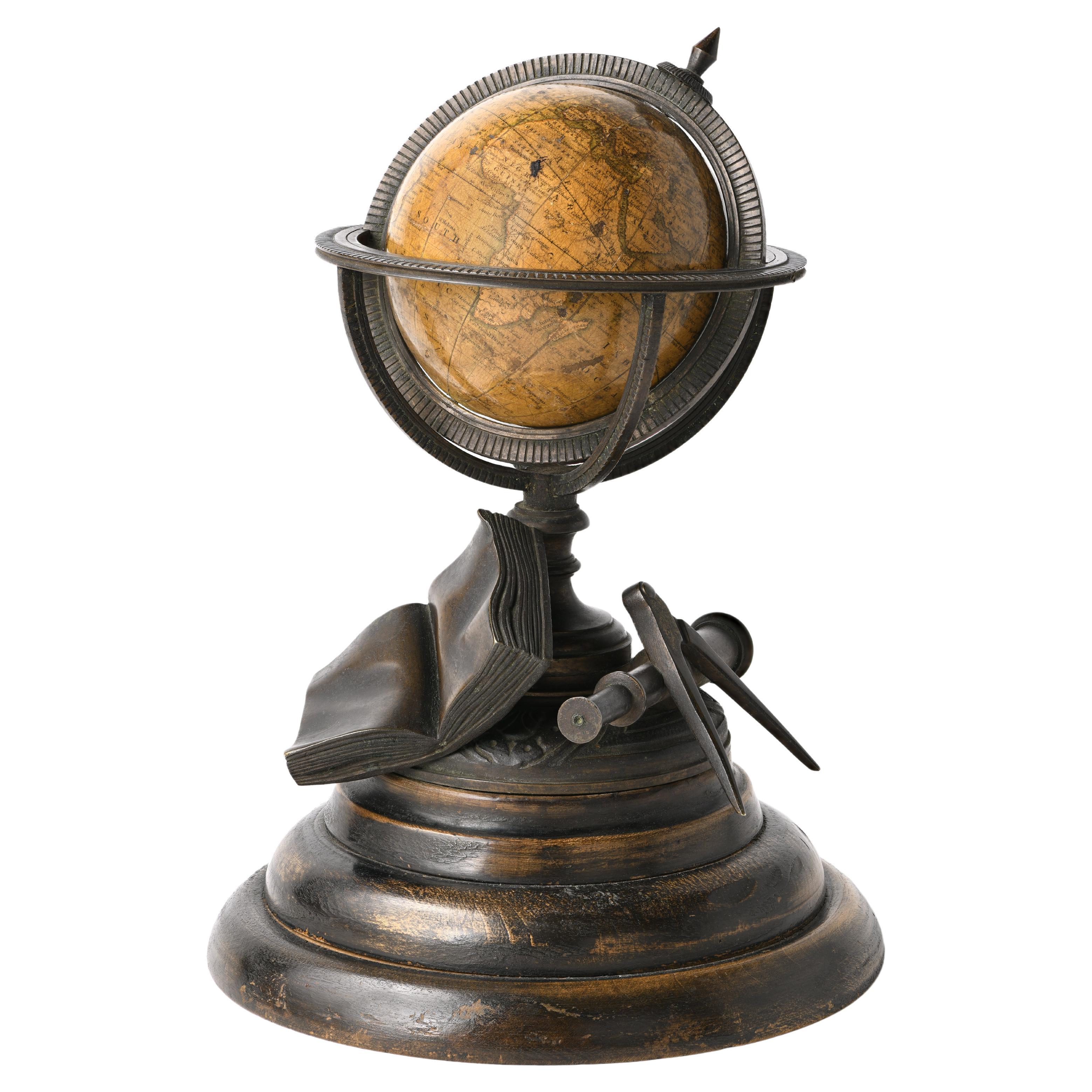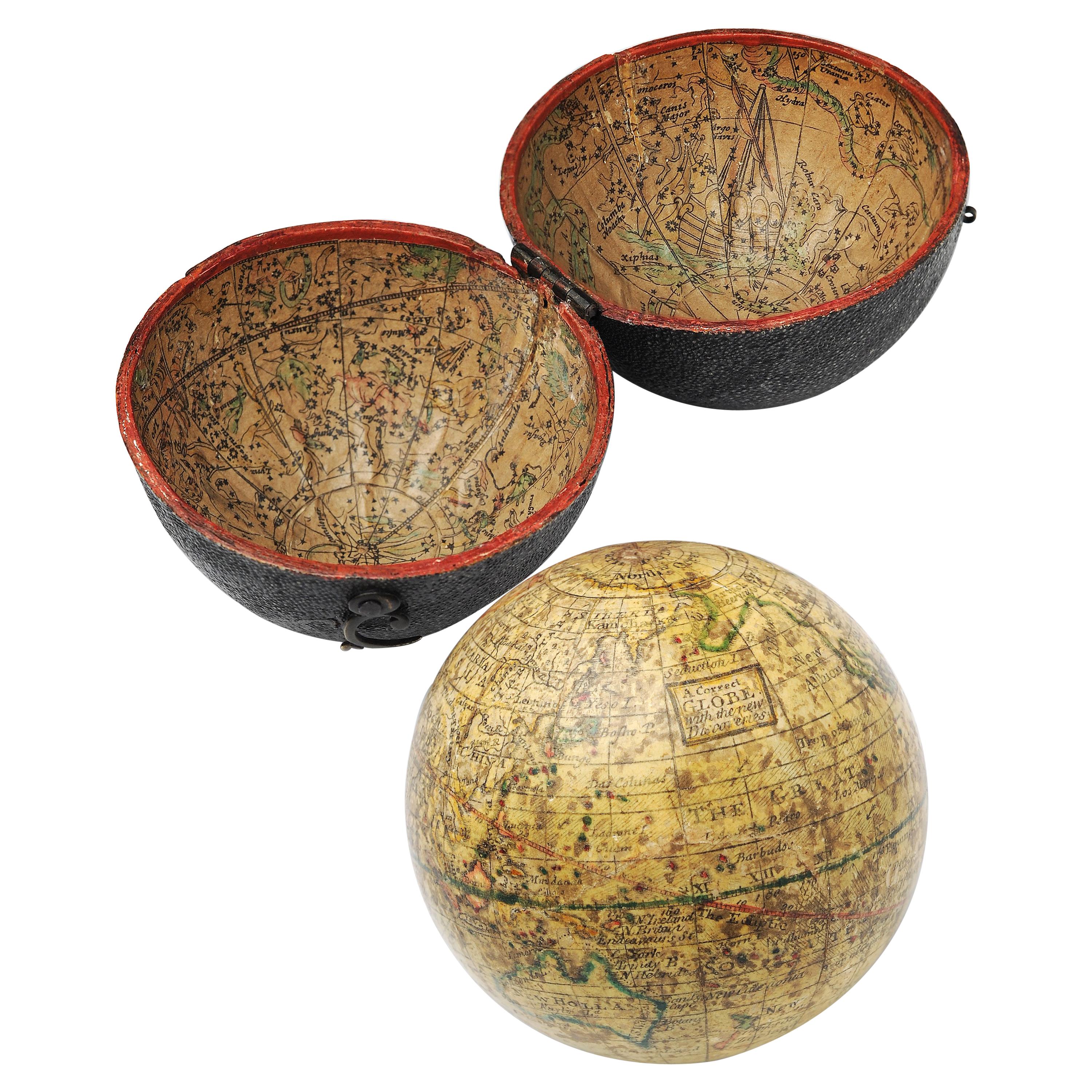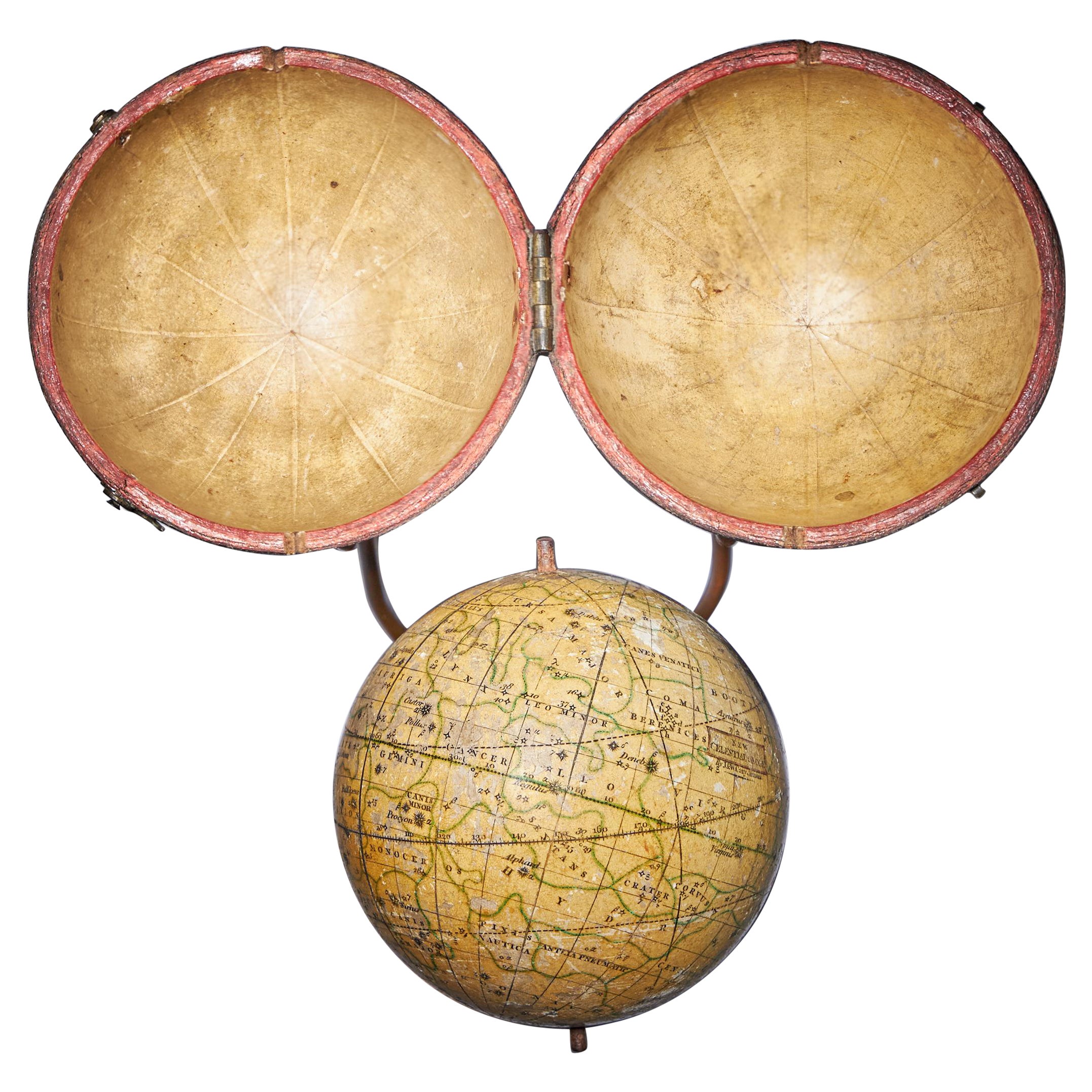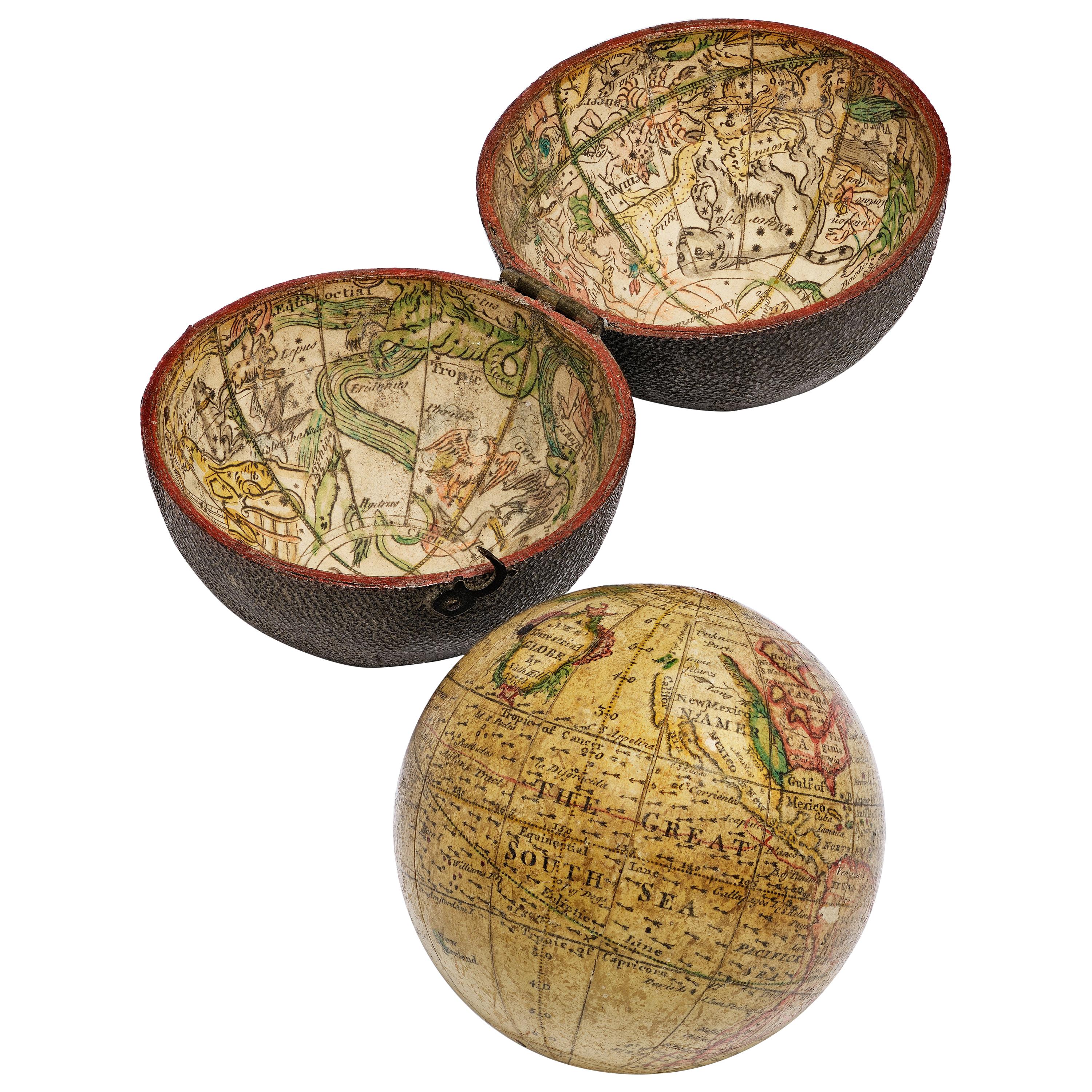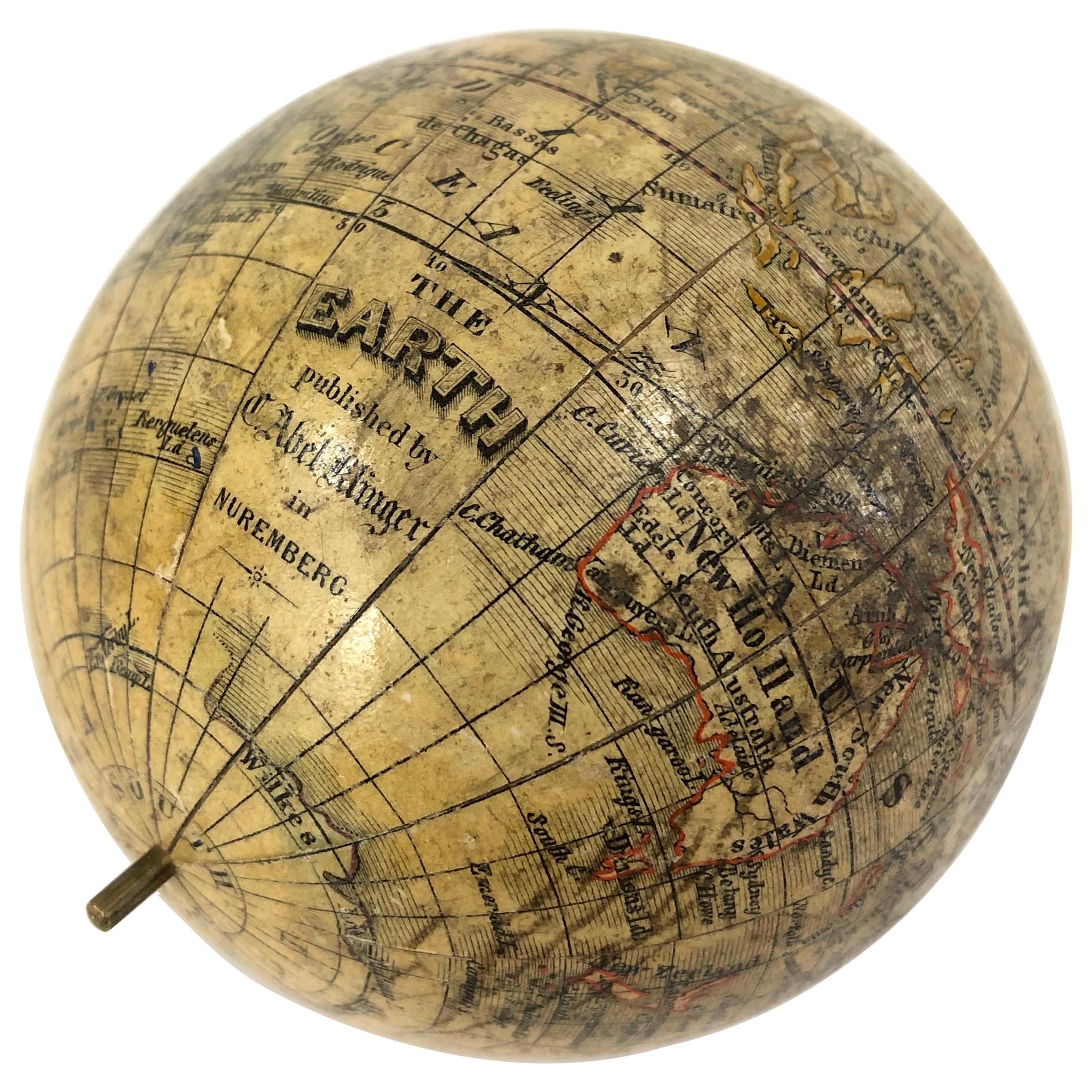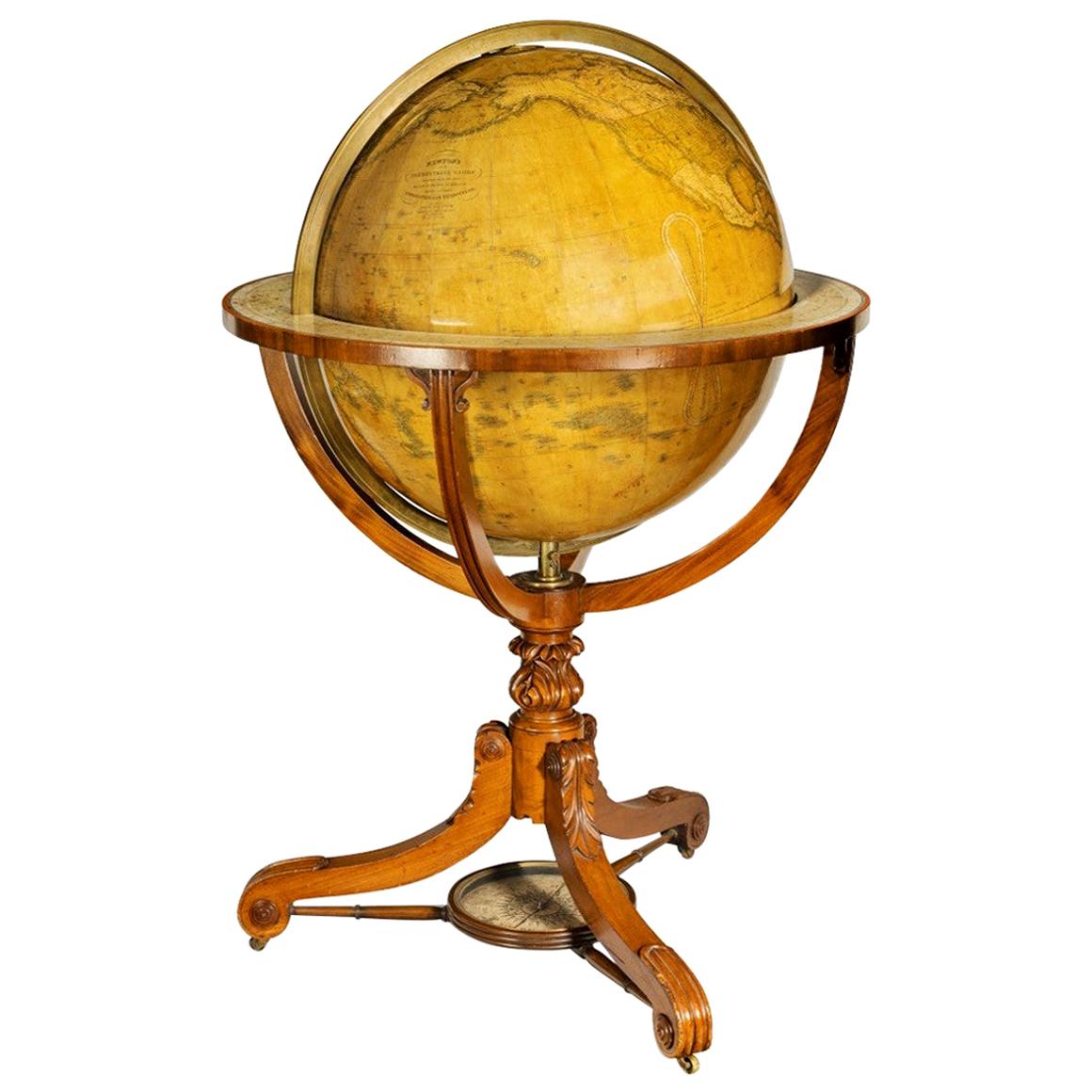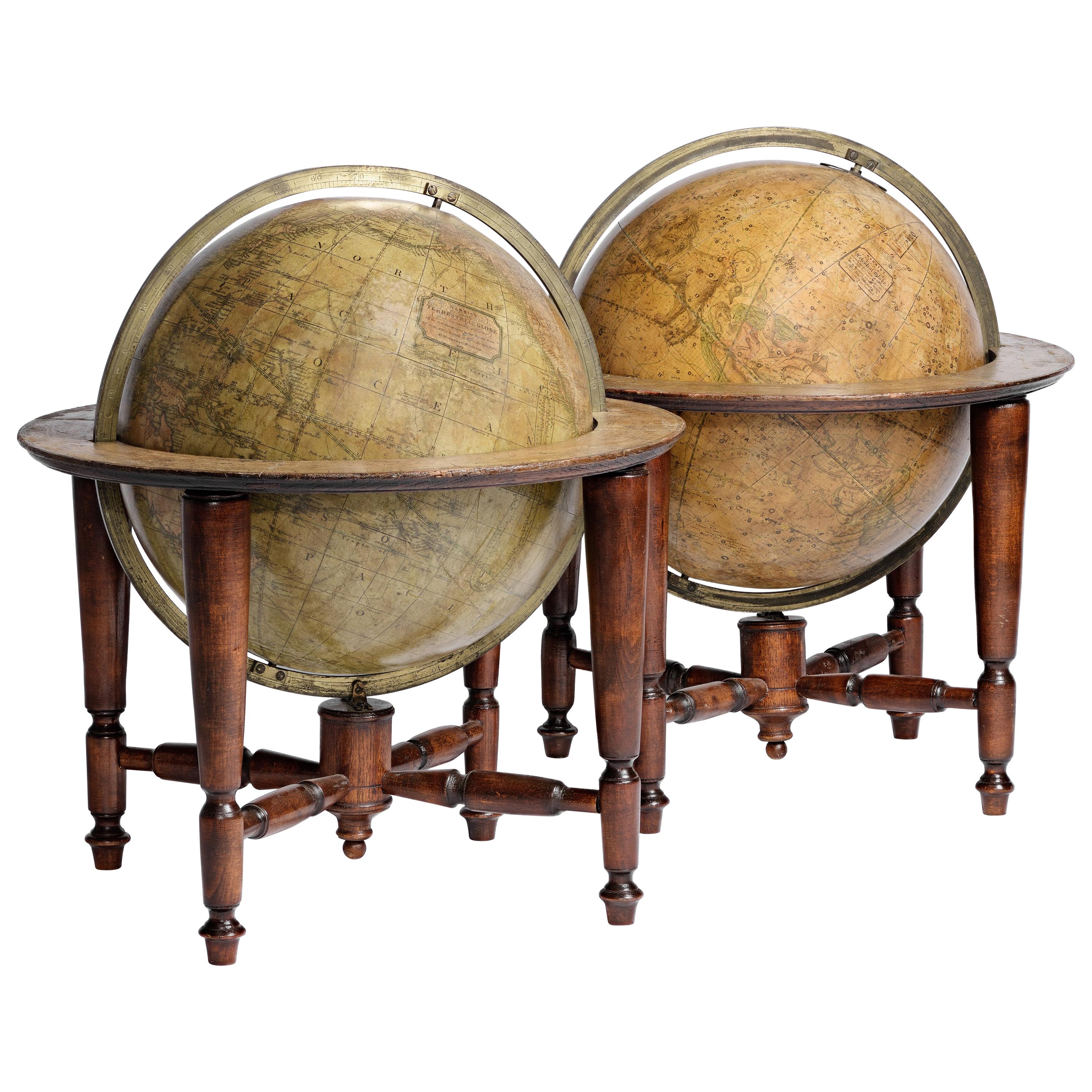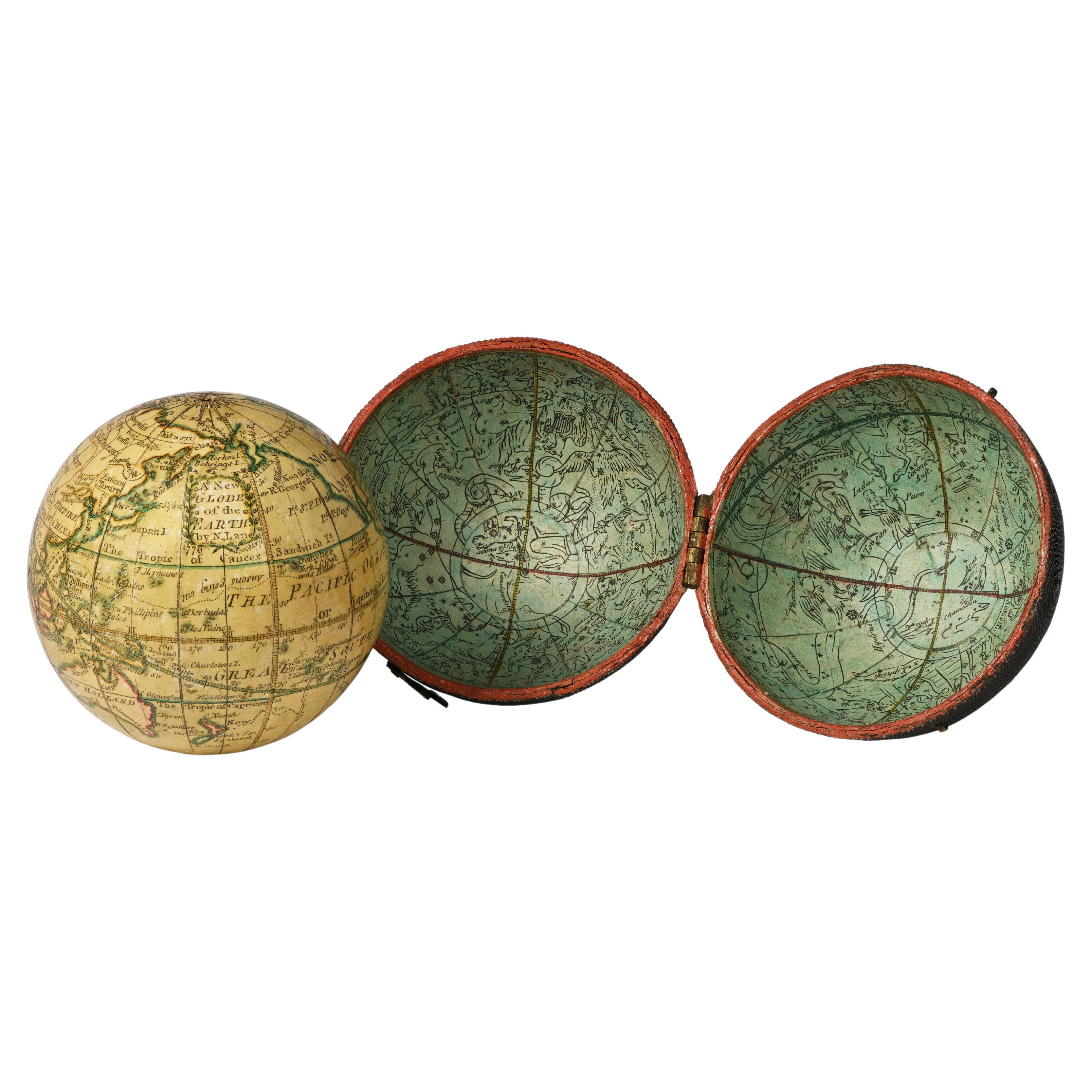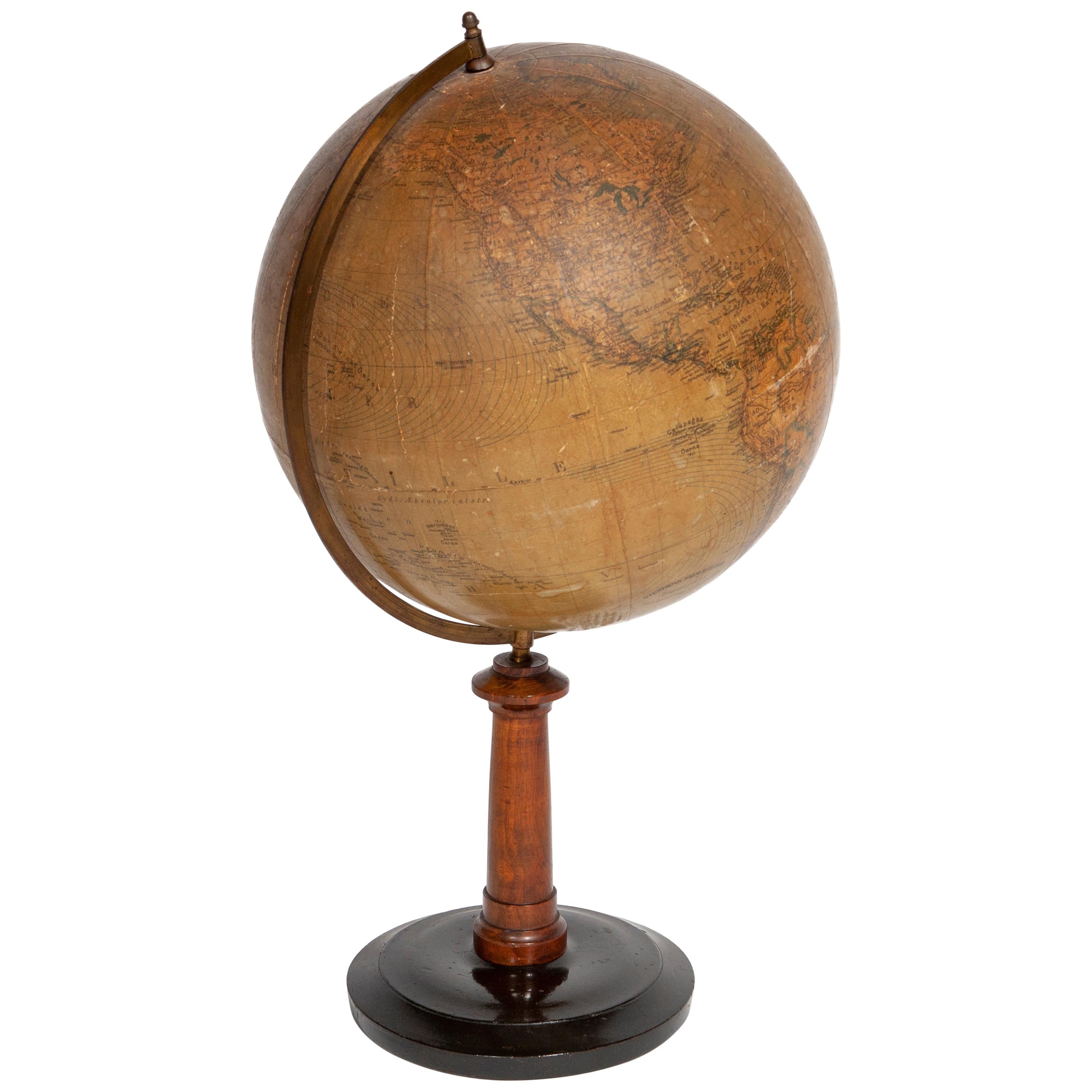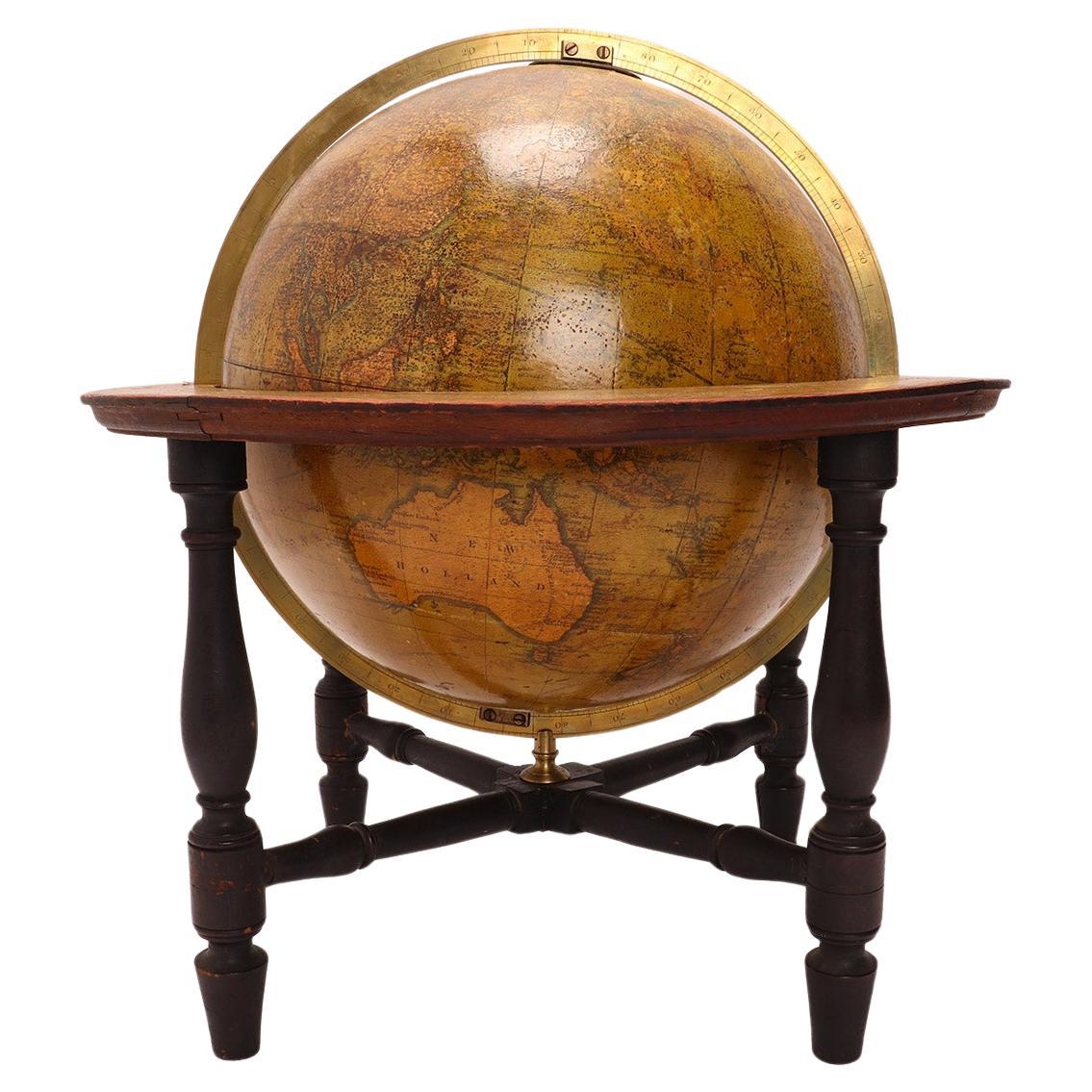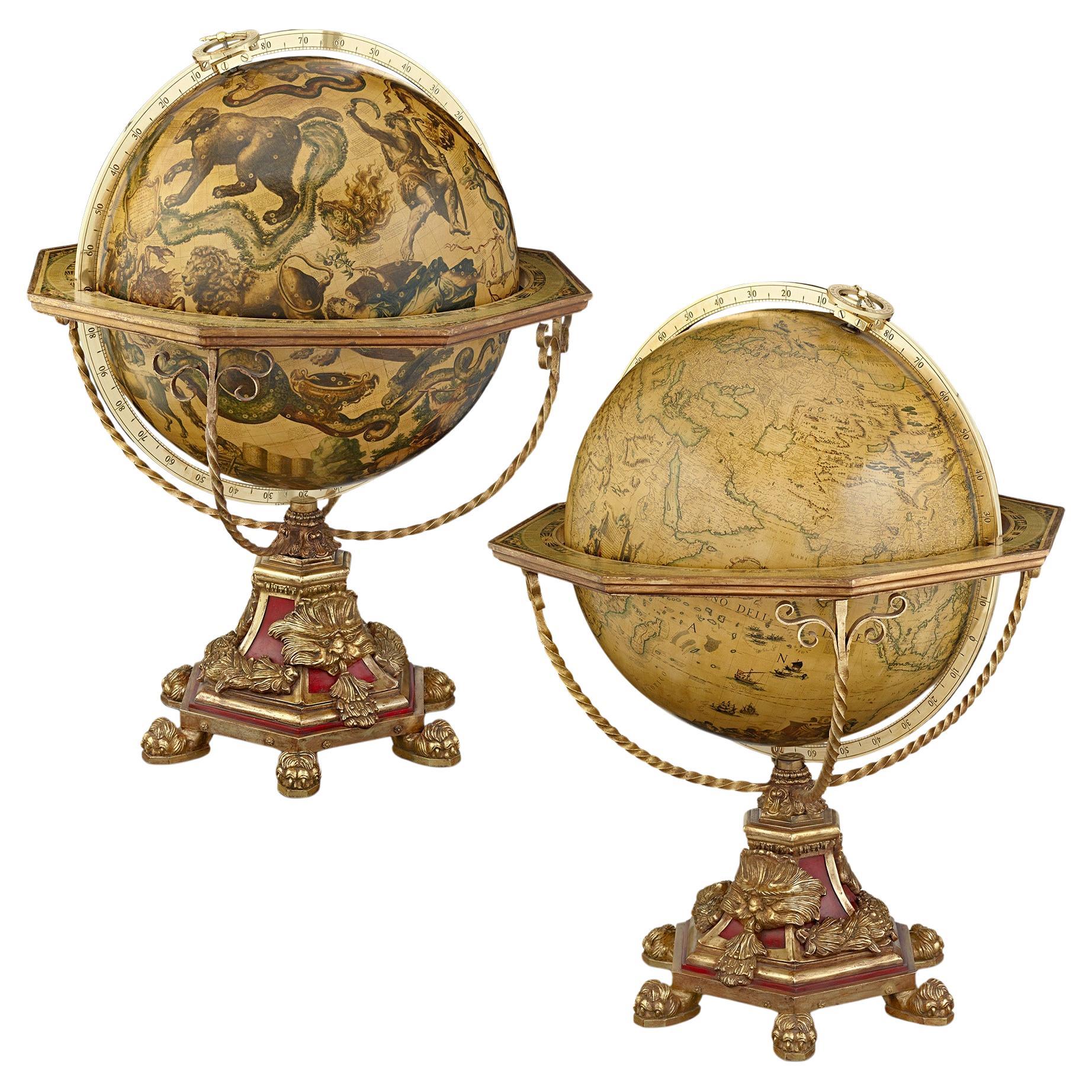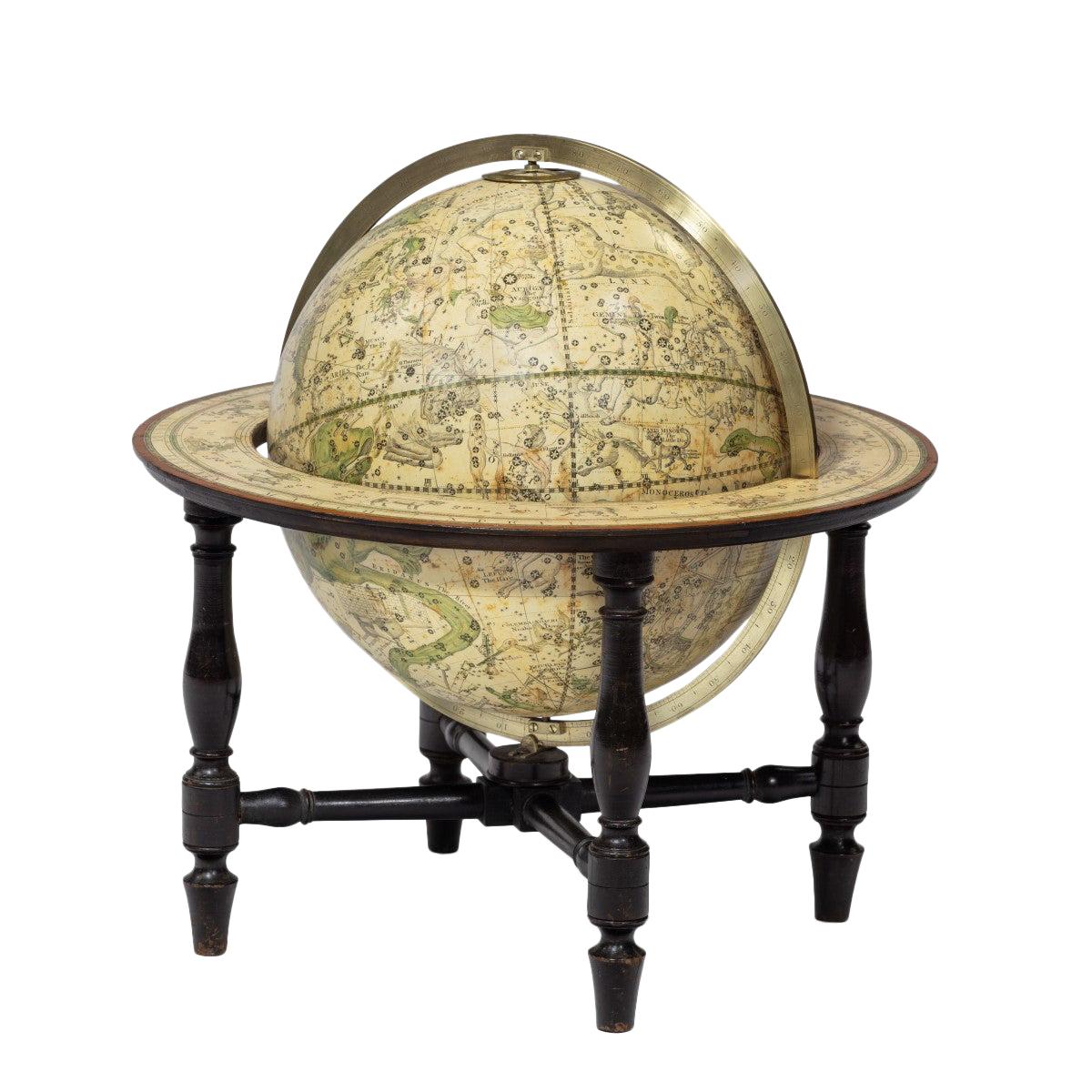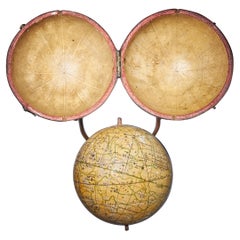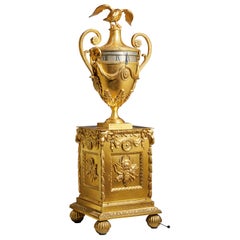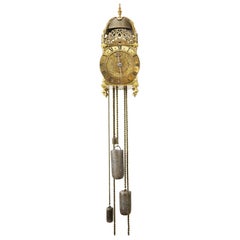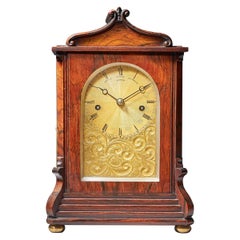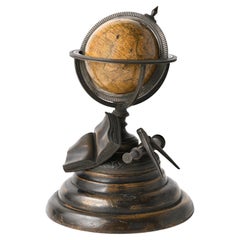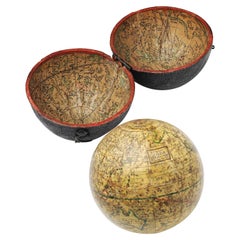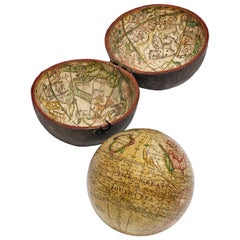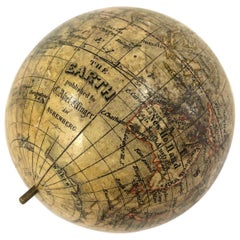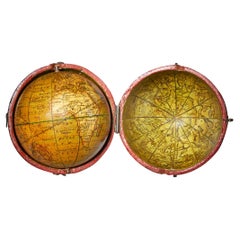
Georgian Terrestrial Pocket Globe by T. Harris and Son, London, 1813
View Similar Items
Want more images or videos?
Request additional images or videos from the seller
1 of 13
Georgian Terrestrial Pocket Globe by T. Harris and Son, London, 1813
$13,626.52List Price
About the Item
- Dimensions:Height: 3 in (7.62 cm)Diameter: 3 in (7.62 cm)
- Style:George III (Of the Period)
- Materials and Techniques:Plaster
- Place of Origin:
- Period:Early 19th Century
- Date of Manufacture:1813
- Condition:Wear consistent with age and use. Wonderful original condition including the lacquer.
- Seller Location:Oxfordshire, GB
- Reference Number:1stDibs: LU4936233082662
About the Seller
5.0
Recognized Seller
These prestigious sellers are industry leaders and represent the highest echelon for item quality and design.
1stDibs seller since 2019
24 sales on 1stDibs
Associations
LAPADA - The Association of Arts & Antiques Dealers
Authenticity Guarantee
In the unlikely event there’s an issue with an item’s authenticity, contact us within 1 year for a full refund. DetailsMoney-Back Guarantee
If your item is not as described, is damaged in transit, or does not arrive, contact us within 7 days for a full refund. Details24-Hour Cancellation
You have a 24-hour grace period in which to reconsider your purchase, with no questions asked.Vetted Professional Sellers
Our world-class sellers must adhere to strict standards for service and quality, maintaining the integrity of our listings.Price-Match Guarantee
If you find that a seller listed the same item for a lower price elsewhere, we’ll match it.Trusted Global Delivery
Our best-in-class carrier network provides specialized shipping options worldwide, including custom delivery.More From This Seller
View AllRare George III Celestial Pocket Globe by Cary, London
By Cary
Located in Oxfordshire, United Kingdom
A fine and rare 3" celestial pocket globe by G & W Cary, Strand, London circa 1791, housed in its original sharkskin case.
A companion globe to terrestrial globes of this type we...
Category
Antique Late 18th Century English George III Aviation Objects
Materials
Plaster
A Unique 18th Century Georgian Urn Clock by Paul Rimbault, Soho London, 1770
By Paul Rimbault
Located in Oxfordshire, United Kingdom
A unique and exceptional neoclassical urn clock by Paul Rimbault, London, circa 1770. This singular example of a pendule à cercles tournants stands as a masterpiece of English clockm...
Category
Antique 18th Century English Adam Style Table Clocks and Desk Clocks
Materials
Brass, Steel
17th Century Lantern Alarm Clock by Johannes Quelch, Oxford
Located in Oxfordshire, United Kingdom
An English 17th century lantern clock made of brass and iron, circa 1665-1670. The clock consists of going and striking trains, as well as a...
Category
Antique 17th Century British Baroque Wall Clocks
Materials
Brass
Striking George IV Eight-Day Rosewood Pagoda Library Clock by French, London
By Santiago James Moore French
Located in Oxfordshire, United Kingdom
This lovely small library clock has a spring-driven eight-day twin chain-fusee movement with going and striking trains. The going train has anchor escapement with a short pendulum and stirrup regulation to facilitate adjusting the timing, which is accessible from the back. The rack striking indicates the hours of a gently sounding bell, which can be repeated at all times by pulling a cord to the side of the case.
The elegant chased and engraved arched gilt brass dial has a Roman chapter ring with five-minute and minute divisions. The maker has signed the dial above the middle: FRENCH ROYAL EXCHANGE...
Category
Antique Early 19th Century George IV Mantel Clocks
Materials
Brass
Rare Silver Pocket Sundial and Compass by Michael Butterfield, Paris, circa 1700
By Butterfield Paris
Located in Oxfordshire, United Kingdom
A beautiful, rare solid silver Anglo-French octagonal pocket sundial with compass by Michael Butterfield, circa 1700.
The sundial is made for a latitude of 44° and could be used in places in the south of France such as Avignon and elsewhere along this parallel. The elaborately engraved base plate has a Roman chapter ring on which the gnomon (a triangular flap) casts its shadow. It is signed by the maker in the following manner: Butterfield A Paris. On one side is a glazed recessed compass with a blued steel hand to position the instrument in such a way that the time can be read. The hinged triangular gnomon is richly engraved and in the shape of a bird’s head. The folding gnomon and cut corners enable the dial to be carried in the pocket.
The underside shows the latitudes of various Southern-French places in the relevant areas
Its maker Michael Butterfield was an English instrument maker who based himself in 'Le Quay de l'Horloge' of Paris from circa 1685. These types of dials, often replicated by other makers, became known as Butterfield Dials...
Category
Antique Late 17th Century French Louis XIV Carriage Clocks and Travel Cl...
Materials
Silver
A Fine and Rare George III Octagonal Figured Satinwood Box, C.1790
Located in Oxfordshire, United Kingdom
A Fine and Rare Late 18th Century George III Satinwood Octagonal Box, C.1790.
The kingwood crossbanded sectional top with ebony and box stringing is finely laid around a central in...
Category
Antique 18th Century English George III Tea Caddies
Materials
Kingwood, Satinwood
You May Also Like
Miniature Terrestrial Globe Newton & Son London, Post 1833, Ante 1858
By Newton and Son
Located in Milano, IT
Miniature Terrestrial Globe
Newton & Son
London, post 1833, ante 1858
Paper, papier-mâché, bronze and wood
It measures: sphere diameter 2.95 in (7.6 cm); diameter of the wooden base 6.02 in (15.3 cm); height 8.36 in (21.24 cm).
Weight: 2,067 lb.
State of conservation: the globe still bears its original paint, but has various small gaps, abrasions and stains on the surface.
The globe is hinged with two pins at the meridian circle, which is in turn inserted perpendicular to the horizon circle; this is supported by four semi-arches connected at the bottom by a small goblet-shaped foot, resting on a wooden bell-shaped base.
Apart from the wooden base, the entire support structure is made of bronze; on the foot there are the scale reproductions of a compass, a telescope and an open book.
The sphere is made of papier-mâché and is covered with twelve printed paper gores.
In the North Pacific Ocean the globe bears a cartouche with the inscription (about 30% of the writing is illegible, but the missing parts can be easily integrated based on the rest):
NEWTON’S
New & Improved
TERRESTRIAL
Globe
Published by Newton & Son
66 Chancery Lane
LONDON
On the globe, much of central Africa is empty and the great lakes Tanganyika and Victoria are not marked (Europeans would begin to explore the area after 1858). Canada is called "British Territory" and Alaska "Russian Territory" (it would become part of the United States in 1867). Australia already bears its modern name (until 1829 it had been called New Holland) and its coasts are completely designed; Tasmania is listed as an island (Matthew Flinders circumnavigated it in 1798). The routes of Cook's various voyages are plotted; both the route followed by Biscoe in 1831 and the "Land of Enderby" which he discovered on the coast of Antarctica, south of Africa, are marked.
Bibliography
P. Van der Krogt, Old Globes...
Category
Antique 1840s English Early Victorian Maps
Materials
Bronze
English Pocket Globe, London, Circa 1775-1798
By Herman Moll
Located in Milano, IT
Pocket globe
London, between 1775 and 1798
Re-edition of the globe of Hermann Moll (1678-1732) dated 1719
The globe is contained in its original case, which itself is covered in shark skin.
There are slight gaps in the original paint on the sphere. The case no longer closes.
The sphere measures 2.7 in (7 cm) in diameter whereas the case measures 2.9 in (7.4 cm) in diameter.
lb 0.22 (kg 0.1)
The globe is made up of twelve printed paper gores aligned and glued to the sphere.
In the North Pacific Ocean there is a cartouche with the inscription:
A Correct
Globe
with the new
Discoveries.
The celestial globe is depicted on the inside of the box and is divided into two hemispheres with the cartouche:
A correct globe
with ye new cons
relations of Dr.
Halley & c.
It shows the ecliptic divided into the days of the zodiacal calendar and the constellations represented as animals and mythological figures.
On the globe are delineated the equinoctial line, divided by degrees and hours, the ecliptic and the meridian (passing west of Greenwich). The continents are shaded and outlined in pink, green and yellow. It shows: the Cook routes; a wind rose in the Southern Indian Ocean; Antarctica without land; Africa with Negroland (Hermann Moll is considered the first geographer to name the West African region in his 1727 map. (Encyclopaedia Britannica, ed. 1902, under "States of Central Africa"); Tartary in Central Asia; the Mogul kingdom in northern India; in North America only New England, Virginia, Carolina, Florida, Mississippi are identified; California is already a peninsula; the northwest coast of America is "unknown parts" (Alaska is not described and it is only partially delineated, it was to become part of the United States in 1867); Mexico is named "Spain"; Central South America "Amazone America". Australia (which was to be so named after 1829) is called New Holland. The route of Admiral Anson is traced (1740) and the trade winds are indicated by arrows. (See Van der Krogt, P., Old Globes in the Netherlands, Utrecht 1984, p. 146 and Van der Krogt, P. - Dekker, E., Globes from the Western World, London 1993, pp. 115.)
Elly Dekker, comparing Moll’s 1719 globe and his re-edition (of which the one described above is a sample), identifies the differences between them: the two editions are quite similar to each other, but in the "anonymous" globe, compared to the previous globe of 1719, California looks like a proper peninsula - the reports of the Spanish explorers of the region had given rise to uncertainty over whether it was connected to the mainland or not. The geographical nature of California was confirmed after the explorations of Juan Bautista de Anza (1774-1776). The routes of Dampier's journey were partially erased and the route of Captain James Cook's first voyage was superimposed on them, and the geography of Australasia was adapted accordingly, including the denomination of the Cook Strait. See Dekker, Elly, Globes at Greenwich, 1999.
An important ante quem element is represented by Tasmania: it is not separated from Australia by the Bass Strait...
Category
Antique Late 18th Century English George III Globes
Materials
Shagreen, Paper
Pocket Globe by Nathaniel Hill, London 1754
Located in Milano, IT
Nathaniel Hill
Pocket globe
London, 1754
The globe is contained in its original case, which itself is covered in shark skin.
There are slight gaps in the original paint on the sphere. The case no longer closes.
The sphere measures 2.6 in (6.8 cm) in diameter whereas the case measures 2.9 in (7.4 cm) in diameter.
lb 0.24 (kg 0.11)
The globe is made up of twelve printed paper gores aligned and glued to the sphere.
In the North Pacific Ocean there is a scroll with the inscription:
A
New
terrestrial
Globe
by
Nath. Hill,
1754.
The celestial globe is depicted on the inside of the box.
On the terrestrial globe much of central and southern Africa is empty. North America bears only the name of some British colonies. It shows California as a peninsula and the northwest coast of America as "unknown parts" (Alaska is not described and is only partially delineated; it would become part of the United States in 1867). The route of Admiral Anson is traced (1740) and the trade winds are indicated by arrows. Australia, still named New Holland (the new name would be introduced in 1829), is part of the west coast. (See Van der Krogt, P., Old Globes in the Netherlands, Utrecht 1984, p. 146 and Van der Krogt, P. - Dekker, E., Globes from the Western World, London 1993, p. 115.)
Nathaniel Hill (London, news from 1746 to 1768) had impeccable professional credentials: he had done his apprenticeship with Richard Cushee, who at the time was carrying out surveying work for John Senex's Surrey map...
Category
Antique 1750s English George II Globes
Materials
Shagreen, Paper
19th Century German Miniature Pocket Terrestrial Globe
By C. Abel-Klinger
Located in Essex, MA
A miniature 19th century 3.5 inch diameter pocket terrestrial globe by C. Abel-Klinger, Nuremberg, Germany, in English for the English speaking markets. Signed with cartouche reading...
Category
Antique 1880s German Scientific Instruments
Materials
Brass
$1,230 Sale Price
50% Off
Large and Extremely Rare Terrestrial Globe by Newton
By Newton Globes - Planer & Newton
Located in Lymington, Hampshire
A large and extremely rare 24-inch terrestrial globe by Newton
Our most magnificent and rare globes were a pair of 24-inch Newton globes.
These too were updated in 1852 (terre...
Category
Antique Mid-19th Century English Globes
Materials
Mahogany
Pair of English 12-inch Globes by William Harris, London, 1832 and 1835
By William Harris
Located in Milano, IT
Pair of 12-inch table globes
William Harris
London, 1832 and 1835
Slight abrasions from use; few cracks
lb 11 each (kg 5)
The two terrestrial and celestial globes rest in their original Dutch style stands with four supporting turned wood columns.
Each one measures 12 in in height x 16.5 in in diameter with the diameter of the spheres measuring approximately 12 in; 48 cm in height x 42 cm in diameter x 31 cm diameter of the spheres.
The 12 inch measure was the most frequently used by British manufacturers of globes of this period.
Each globe is composed of two series of twelve printed paper gores, aligned and glued onto plaster spheres.
The brass circle of the meridian bears engravings...
Category
Antique 1830s English William IV Globes
Materials
Paper, Wood
Recently Viewed
View AllMore Ways To Browse
Zodiac Globe
Antique Optician
Pocket Globe
Antique Chart Table
Antique Pocket Globe
Celestial Globe Cary
George W Russell
Propeller Used
Antique Airplane
Aircraft Seats
Wood Propeller
Used Jet Engines
Airplane Desk
Vintage Airline Collectables
Airplane Propeller
Aircraft Engine
Douglas Furniture Company
Metal Airplane Models
